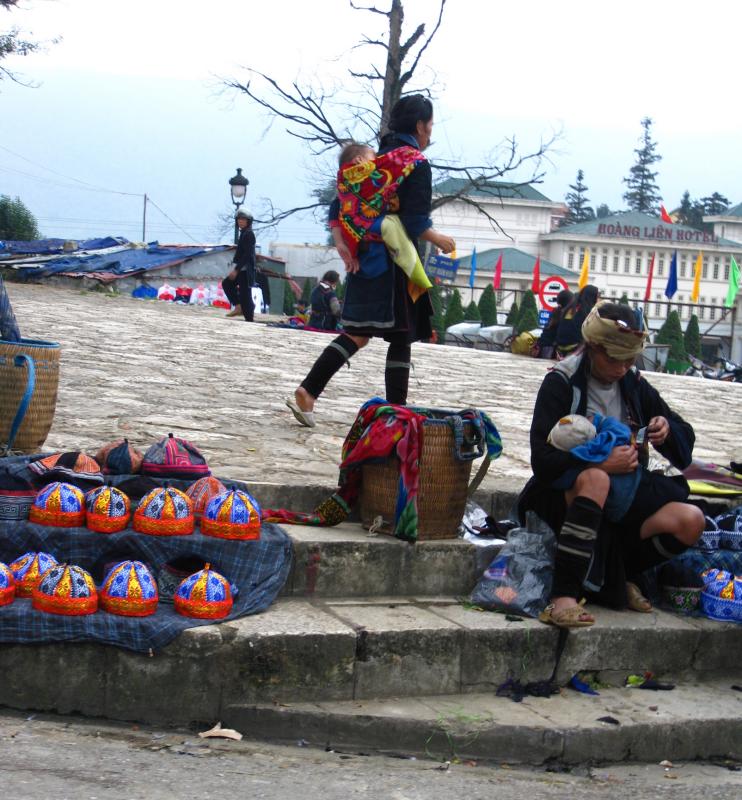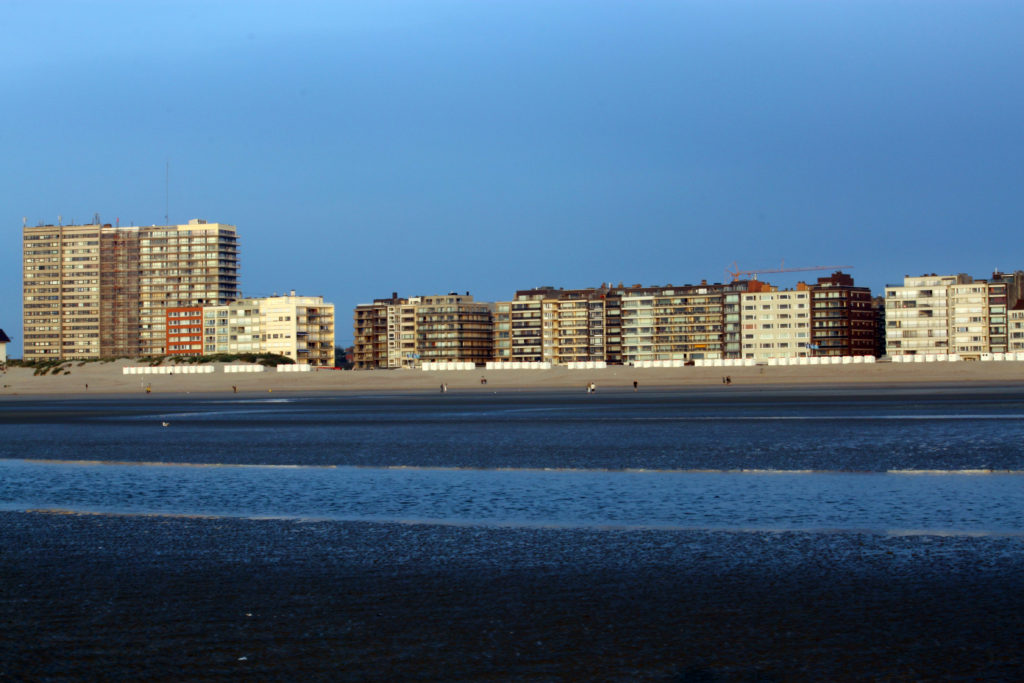
by Geert Vansintjan
I am walking through town in the remote and charming mountain region in Vietnam, looking for the market. A young woman helps us out. She walks part of the way to the market, and we have a conversation on what brings us there, and what she does for a living. She works in the kitchen in one of the hotels. Her mother is in charge of the kitchen. She is off to buy groceries. What will be her future? In any major city of Vietnam, a bright woman like her with this level of English fluency would be expected to study. Here, I expect her to work at the hotel for most of her life and move up the hierarchy until she fills the place of her mother.
Tourism is a global phenomenon, an important economic sector, and it shapes how people promote their own national identity. Most articles on the economic effects of tourism look into the income it generates or the investment it brings to a region, the destruction and environmental damage that it causes, whether income from tourism is sufficiently returned to communities where tourism is landing, and the effects of tourism on public life and identity politics.
This article focuses on the income that will not be generated when there is a priority for economic development in the tourism sector because tourism crowds out other options. A region’s dependency on tourism inhibits development in other sectors—sectors with more productivity and development potential.

Single-use infrastructure
The first highway in Belgium was finished in 1956 and ran from Brussels, the capital, to Ostend, the place of the Royal Holiday Home on the coast. The highway was constructed to facilitate the summer holiday migration from the cities to the coast, as well as the flows of international tourism embarking to London from the port of Ostend. Developers constructed a wall of high rise apartment blocks along the coast destroying the dunes and wildlife. These investments did not lead to a more diversified economy and the coastline stayed a backwater, even with all this building and tourism. Still in 1980, the region needed special European funding for its development, notwithstanding its prime location between important ports in Belgium and France.
Due to the seasonal nature of tourism the highway was, and is, never wide enough in peak season, while below capacity during the low season. The same goes with all infrastructure: hotels, houses, high-rises, shops, restaurants, roads. As full capacity is needed during important stretches of time, alternative uses are difficult.
Often public infrastructure for tourism promotion is only singly-use: a highway to an economically unimportant city, a cable lift, a hotel. The private and public infrastructure for tourism is often exploitative: building a hotel in a prime landscape makes the landscape less prime for others, and inflation on investment leads to it becoming a typical tourist trap, as in Niagara falls, where the landscape is only a backdrop for tourist fleecing.
A region’s dependency on tourism inhibits development in other sectors—sectors with more productivity and development potential.
As a lot of private infrastructure for mass tourism is foreign or large, the focus is on fast returns on investment, without much attention to the needs and potential of the local communities and the local economy. The returns flow back to the investors, and the unschooled local population stagnates.
Low return on investment in education
In an economy dominated by tourism, the return on education is low, keeping people in a low income trajectory. Jobs are in hospitality or sales sectors, with limited educational needs, and wages are never high. Young people find a job, especially during high season, with a lot of unemployment between peaks. Why study? You can find a job without much schooling and have a lot of pocket money or even start a family. There is an advantage to speak some languages and know some basic skills, but higher education is not really needed. Even if higher education is available (which is often not the case) – there is no incentive to study for years instead of earning an income immediately.
The individual is stuck in a flat income trajectory, the family is stuck in a rut and the community is not developing.
Over a lifetime there is nearly no increase in productivity and salary. Service jobs require real skill—acquired by training or practice—but the limits on productivity are also real: you can only make a bed so fast (and honestly I cannot do it at all). The individual is stuck in a flat income trajectory, the family is stuck in a rut and the community is not developing.
As the employment options for higher education in the region are limited—and these jobs are often filled by people and employers coming from other regions—there are few role models for education. The role models for success would be rather the entrepreneur who, with luck and hard work, creates a successful business from scratch. It is fashionable to praise the entrepreneurial model, but for widespread growth, this maverick approach is definitely less reliable as a “one size fits all” solution than investment in human resources: education.
In industrial or postindustrial economies the return on investment in education is high. Unschooled labour is needed for the initial stages of industrialisation, but, very soon, schooled labour gets better opportunities. The menial jobs are done by immigrants from the periphery (yes the migrants from the poor, touristic regions). The difference in pay and status between a schooled and unschooled job is important enough to postpone income, marriage, and life until after university. Most industries suffer from Baumol’s cost disease: as wages rise in other industries, employees start to expect rising income, in line with the other sectors. This way a sector with low productivity becomes uncompetitive for labour and sheds jobs. The invisible hand at work. When tourism is a dominant sector in a region is isolated from other industries and does not suffer this effect. Normally the tourism industry, with its low wages, should shrink compared to the rest of the economy. But in a tourist trap, the salaries stay where they are.
In regions dominated by tourism, emigration remains the most efficient way to lift anyone and their family into prosperity. Getting out of the region with the family is an escape towards higher productivity and higher education.
The tourist trap
Tourist areas are not leading towards a diversified, sustainable economy. The tourist is a captive market, and the drive for better quality of products or services is low. The tourist will buy the only junk they can get once they are trapped at the tourist attraction. The “development” towards a more sophisticated economy does not happen, the products are, and stay, crap. Indeed, this is why we call it a tourist trap. With all respect for the painstaking manual craftwork of the Indigenous people, most will never earn more than around a dollar a day, even when cheating the tourist whenever they can (as they should).
Tourism makes people—most often women—exhibits in a human zoo. A museum piece to look at, to stare at, or to give a penny for a picture.
When tourism is the dominant sector, most jobs will be in “service” functions—as a servant to outsiders. When the lure of tourism is some exotic ethnicity, even the core identity makes people—most often women—exhibits in a human zoo. A museum piece to look at, to stare at, or to give a penny for a picture.
In touristic areas women will often be forced into sex work and face exploitation from their handlers or abusive behavior from customers—and even harassment from the police. Like in mining towns, shipping ports, and military bases—where the economy revolves around the constant influx of strangers with a lot of money to spend—authorities look the other way or even participate in and profit from exploitation in the sex industry.
How do you build a sense of community in a village if in every bar, restaurant, and square there are many more strangers than neighbours?
Overall, mass tourism involves low esteem jobs, low-quality trinkets, and overcrowded public places with little space for the local community life. How do you build a sense of community in a village if in every bar, restaurant, and square there are many more strangers than neighbours?
The charming resource curse
Tourism is a “charming resource” based economy. It shares elements of natural resource based economies described in the study “Urbanisation without industrialisation“. In this study the authors explain that cities in a natural resource economy are ‘consumption cities’, in contrast to ‘production cities’ with a mix of industry, agriculture and services. The composition of the workforce, poverty prospects, and long term growth are all different for each kind of city. A region with an economy dominated by tourism has characteristics of consumption cities, and the prospects for long term balanced development with rising productivity are low.
Unbridled one-sided industrial development can have the same effect: polluting industries crowd out all other activities. However, modern urban development thrives on diversity and synergy: the better a city is at creating a living environment for workers, managers and students, the better it becomes at attracting industries. As a bonus, a city becomes more interesting for tourists when it is more livable. A modern city becomes more and more diversified as it becomes more successful. It is the complexity of the social and economic network that leads to its success.
Tourism within limits
The growing resistance to touristification in cities like Barcelona and Amsterdam shows that the core of the problem is understood by the populations involved. As the conventional wisdom is that any development is good development, their resentment is normally ignored and ridiculed. However, cities with a “real” economy keep tourism within bounds. Sometimes they even revolt against it. The latest measures of the municipality of Barcelona show a revolt against tourism. In New York too, there is an ongoing debate to keep tourism within limits. Standards are proposed to limit the damage tourism does to a society and the environment.
Cities with a “real” economy keep tourism within bounds.
It is possible to maintain a proud identity and grow a developed and prosperous country, but not when tourism dominates. Japan has proven that it is possible, Singapore, France, and most European cities too. Tourists are welcome, but the city is there for the citizens, and the investments in the city are to make the quality of life better for their own population. Tourists enjoy these quality of live investments too, but they are not the main beneficiaries. This is possible if tourism is a sideshow, something mostly using available resources and adding income to local restaurants instead of being an economic focus in its own right.
To conclude, tourism should be considered as one option to complement other economic priorities that fully optimize the existing capacities of the physical, human, and economic infrastructure of a city or a region. Moreover, it can be a way to strengthen local identity and pay for maintenance of culture and beauty. It should not be pursued on its own as a gateway to economic and social development, because too many aspects of tourism skew the economy, present the local identity as “exotic” and act as a poverty trap.
Just as the one-industry city has been proven to be a bad idea for manufacturing or heavy industry, the one-industry region is a bad idea too, at least if that industry is tourism.
Geert Vansintjan is a development and humanitarian professional with field experience in Central and South Africa, Central America and Asia.